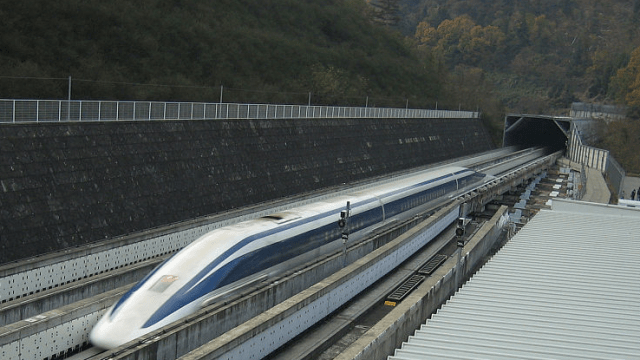Come on guys. It’s just 60km. We’ll even go halfsies with you. Except, in this case, “halfsies” still amounts to $US5 billion. Japan, in an effort to help Washinton DC build a maglev train that would cut travel time to Baltimore down to 15 minutes, is offering up half the cash to do it. The question is: Does that make the project worth it?
In a report from The Washington Post, we learn that the Japan Bank for International Cooperation has committed $US5 billion to the venture, while the Central Japan Railway Co. says it will forego any fees that it would normally charge for licensing its maglev tech. There’s a simple reason why Japan is going to such lengths to help DC: It wants — and needs — a showcase for its still-emerging technology.
The group behind the plan, Baltimore Washington Rapid Rail, wants to build a so-called “The Northeast Corridor, a maglev line stretching from New York to DC through Philly. It’s a wonderful plan, in theory: It would cut down on traffic, connect Baltimore to vital jobs and culture, and provide a case study for bigger projects across the country.
But there are as many valid criticisms as there are virtues: Starting with the fact that the system would more than likely cost far more than $US10 billion to build, and there’s no clear evidence of demand for such a line — only demand from a private company hoping to finally show off its technology. The ultimate question, as Gizmodo’s Mario Aguilar pointed out last year after Elon Musk’s hyperloop concept was released, is whether the parties involved can actually garner support from the public. Any project that requires this much public money will need an immense amount of support and momentum — and without it, it will never succeed.
There’s still a long, long way to go for the project — the revelation about Japan’s investment was part of a filing to the the Maryland Public Service Commission about the proposal. Again, let’s not forget that it was only a decade ago that Florida’s own maglev pipe dream died an untimely death at the hands of Governor Rick Scott, despite having $US2.4 billion in Federal funding set up. [Washington Post]
Picture: Yosemite/CC
